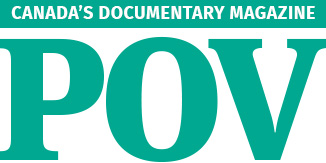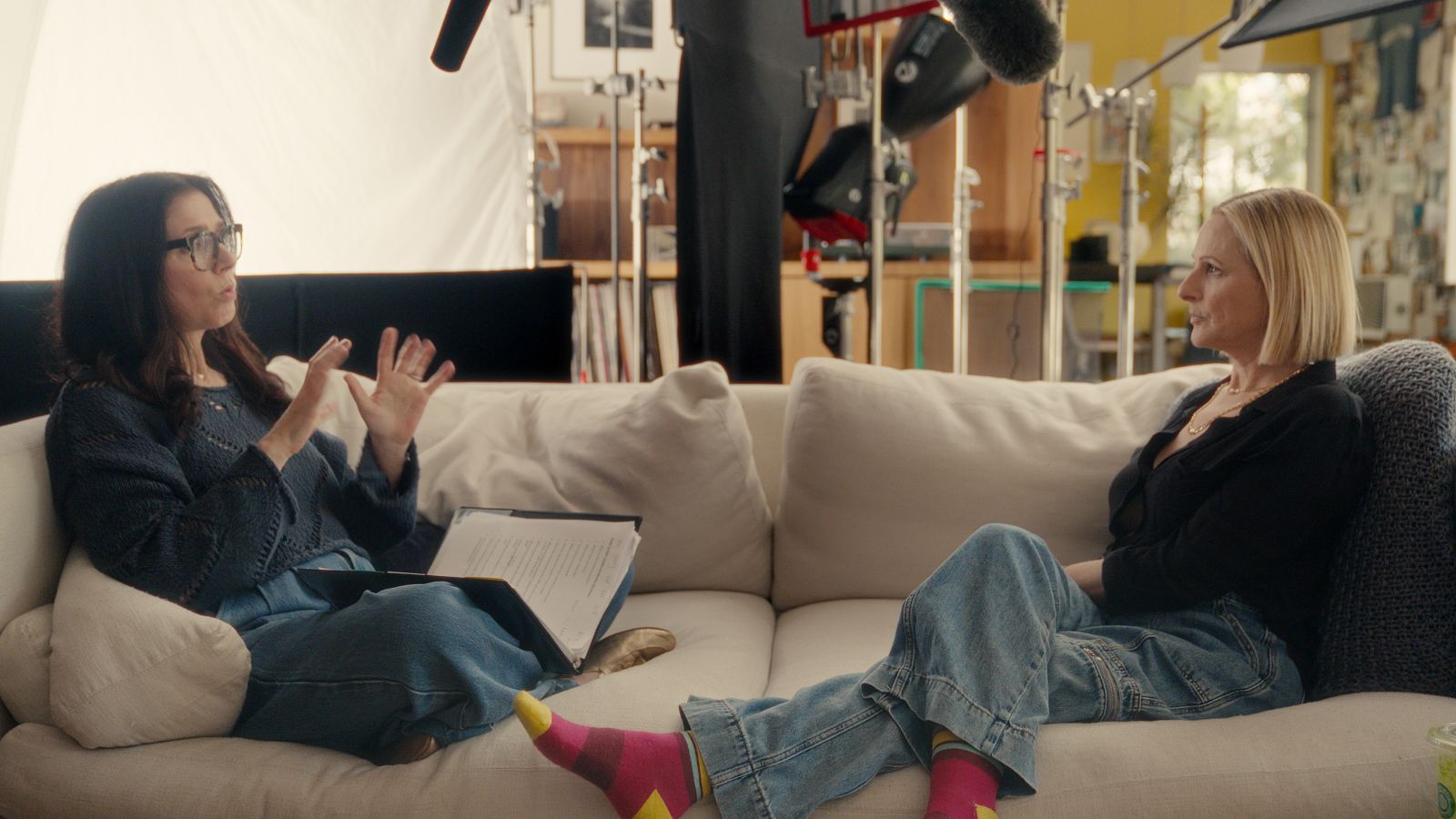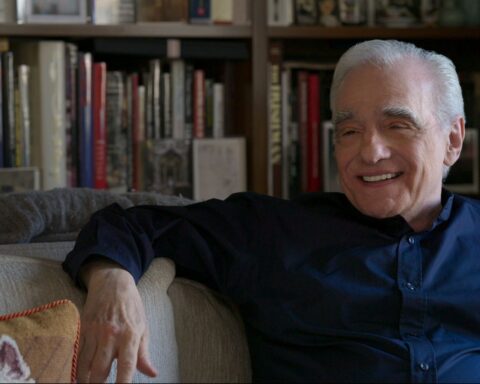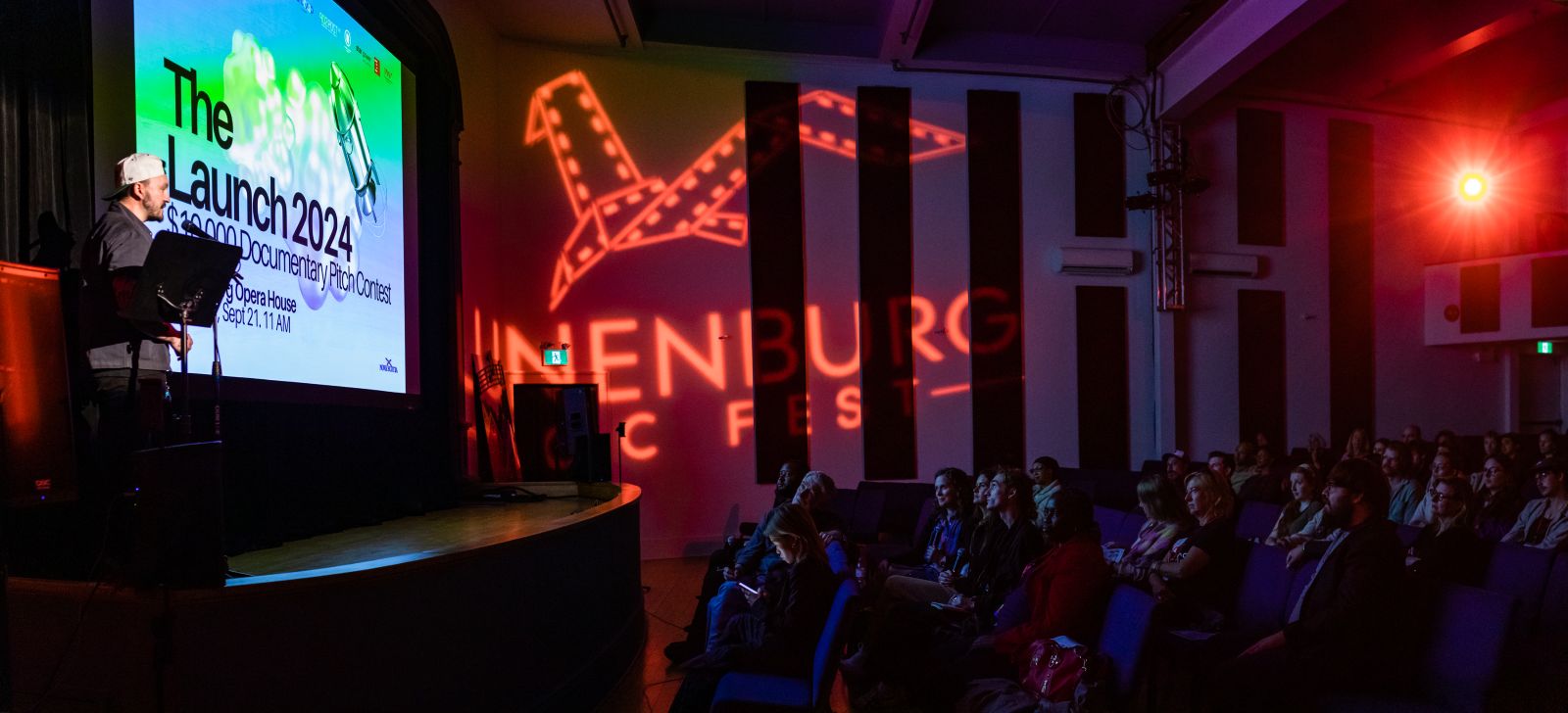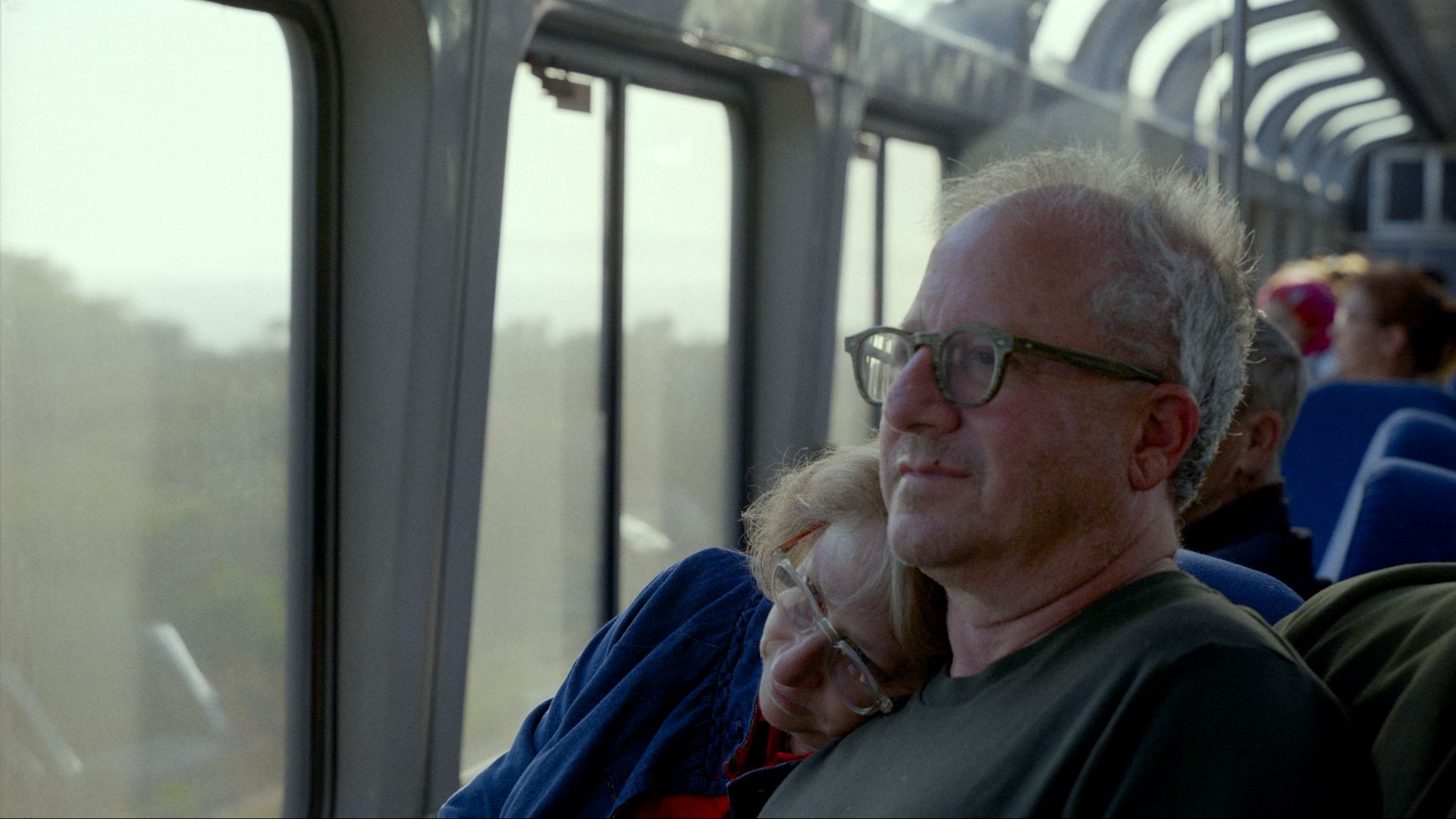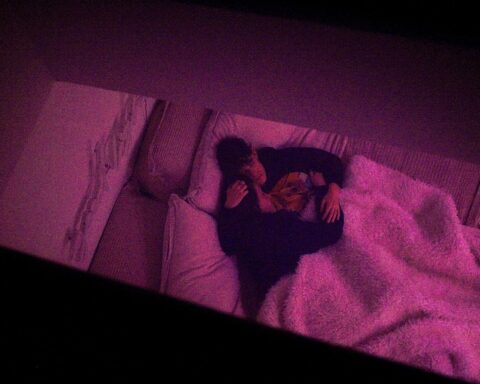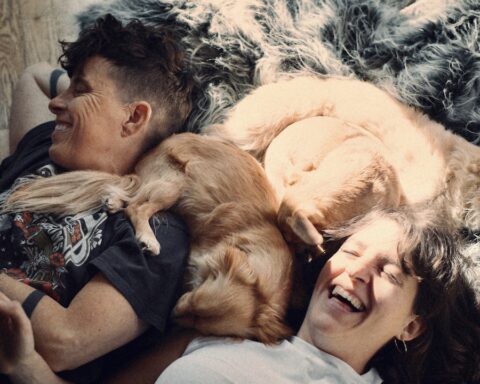“I do enjoy watching actors working, but when we’re talking about hearing actors, I can enjoy them through captions, but I can’t hear their voices the same way,” notes Academy Award winner Marlee Matlin in a Zoom interview with POV. “You can hear their voice, the tone, the emotion that they express—whatever it is, how they choose to express themselves. But when I watch a Deaf actor, I’m absolutely mesmerized to see them express themselves through Sign, because that’s my version of sound: the hands. I learn a great deal from them in different ways.”
The actor’s extraordinary career receives a fine appreciation Marlee Matlin: Not Alone Anymore. The film directed by Shoshannah Stern proves as radically groundbreaking as its subject, who first wowed audiences with her expressive performance as Sarah in the 1986 drama Children of a Lesser God. Not Alone Anymore chronicles Matlin’s career from her breakthrough performance in Children of a Lesser God, which made her the first Deaf actor to win an Oscar. But as the film begins with Matlin en route to the Oscars once again, where she joined the crowd at the Dolby Theater in celebrating her CODA co-star Troy Kotsur’s Oscar win, Not Alone Anymore asks why it took 35 years for another Deaf actor to receive such recognition.
Not Alone Anymore makes it fairly obvious that Deaf actors certainly have powerful screen presence. Stern, who is also Deaf, fashions a radical piece of cinema that centres the dramatic presence of American Sign Language. It’s arguably the language most richly suited to a visual medium like cinema—a point that Matlin and other interviewees make throughout the film.
Stern shows the intriguing nature of the film’s design in its opening interview when Matlin asks her about the set-up of microphones for two Deaf people conversing in ASL. Stern notes that hearing interviewees and crew members receive interpretation via an earpiece, as audio will be used to facilitate editing. It’s a model for accessible filmmaking. Moreover, as Stern and Matlin converse in ASL, their expressive gestures convey the tones and emotions that allow viewers both Deaf and hearing to appreciate the “sounds” of their words.
While Not Alone Anymore credits Matlin’s performance as Sarah in Children of a Lesser God for providing a breakthrough moment for Deaf representation, Stern lets the Oscar winner enjoy her flowers while also asking why Hollywood seemingly took the film as a one-and-done accomplishment. The point is less about Matlin being the only one to win an Oscar for years, but rather being the only Deaf performer to get a role to merit Oscar consideration, while hearing actors like Jane Wyman won for playing a Deaf character in 1948’s Johnny Belinda.
“There are so many people like me who saw themselves for the very first time on screen when Marlee won her Oscar for playing Sarah in Children of a Lesser God,” notes Stern. “It was a really exciting time for many of us. It was a very formative moment that really led to so many laws being passed, like captioning coming into play, the Americans for Disability Act. I really feel like it all started with that role.”
But amid those developments, the film shows Hollywood’s resistance to change. Despite the breakthrough of the film, it seems that Hollywood didn’t seem to know that to do with Matlin—or, frankly, Deaf actors and audiences. The film explores parallels between Sarah and Deaf actors like Matlin who are expected to accommodate a system designed by hearing people. Children of a Lesser God puts Sarah in a position of rebellion when her teacher and eventual lover (William Hurt) decides it’s his mission to teach her to speak verbally. That dynamic filters into their relationship as Sarah fights for agency. The documentary observes how elements of the 1985 film, notably the marketing, frame Sarah through ableist language.
“My understanding of what a relationship should look like had really been shaped by that film because I saw that when I was at such a young age, and it led to me being a survivor,” continues Stern. The director evokes an unspoken sentiment about the offscreen dynamic between Matlin and Hurt as they began a relationship during production of Children of a Lesser God. The film chronicles the abuse that Matlin experienced at Hurt’s hands. “I have to say that I’m a survivor as well because of my perception of love that might’ve been wrong, that I just tolerated and accepted behaviour that wasn’t acceptable,” says Stern. “But that movie was viewed as a love story between a very patient hearing man and a very angry Deaf woman.

“I think we really appreciated Children of a Lesser God for being the first that represented its time. But not all stories really stand the test of time,” Stern continues. “We can appreciate the story for what it was and recognize that no story should be expected to be the only story. It should have opened the door for more stories to talk about other people and other characters, not just one. But society is very different now than it was when that movie was written.”
The film underscores this point when Stern tells Matlin that she also played Sarah in a stage version of Children of a Lesser God. Stern later interviews actor Lauren Ridloff, who earned a Tony nomination for playing Sarah—great recognition, but, again, it’s more of the same.
Matlin, meanwhile, gives a pragmatic response when asked if making the documentary and seeing revisiting Sarah had any effect on her relationship to the character. “Based on my career, I have to admit that I never really watched myself,” she admits. Matlin notes that she might watch a performance just once, but she’s matter of fact when it comes to Sarah. “If Children of Lester God were not put out there, and if Mark Medoff hadn’t written it, we wouldn’t be sitting here.”
Ask Matlin about embracing new challenges in her career, though, and she fires up. The film observes how she turns to producing and directing to again lead the change. Matlin says that she does wear many hats as an artist, but being the subject of a documentary allows her to reflect upon her life and work without being a backseat driver. (Unlike many recent celebrity docs, Matlin does not have a producer credit on Not Alone Anymore.)
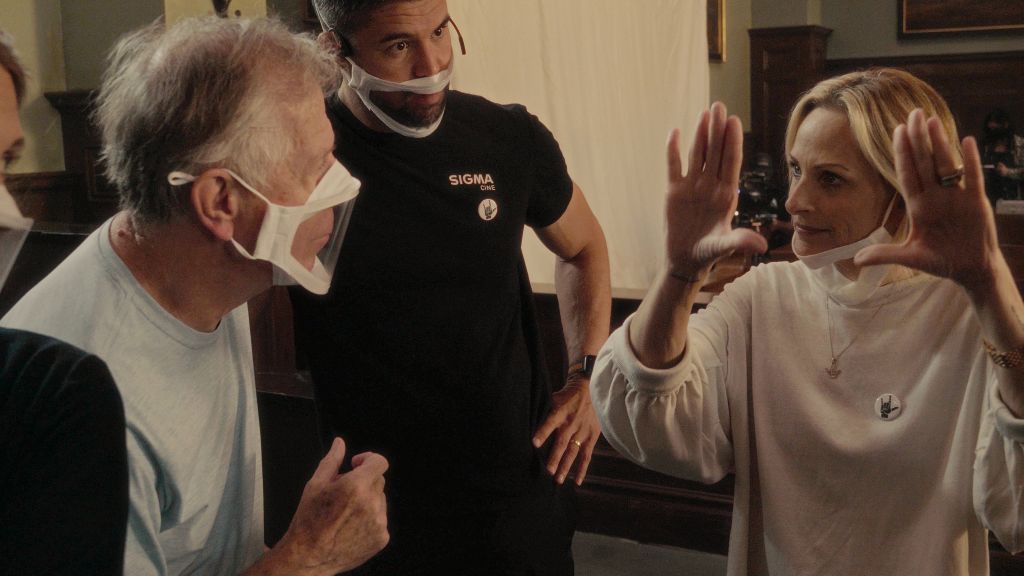
“When I’m directing, I’m directing. When I’m acting, I’m acting. And when I’m producing, I’m producing,” notes Matlin. “But most people who aren’t Deaf who are directing or producing or acting, they’re able to multitask. I don’t have that ability. I don’t have the opportunity to be that busy. When I’m directing, it’s just the thing I’m doing at the moment. It’s what I’m focused on, and I’m able to hone in on that. When I’m acting, it’s the same thing. I really typically don’t have other things going on at the same time.”
Matlin says it’s just the same as being an actor and a parent—or grandparent, as Not Alone Anymore ends with her landing that role as well. “I have many different hats when I’m being a mother with dealing with four children, but when it comes to work, it’s different,” Matlin notes. “I work at a different pace than most people would expect because it’s a role that I focus on and I hone in on it. But it would be nice to be able to be that busy, to be able to wear multiple hats at one time, and to be able to manage them.”
Not Alone Anymore demonstrates Matlin had to juggle different hats when she was thrust into an activist role by becoming a default spokesperson for the Deaf community. A pivotal moment from the archives, for example, shows when Matlin was asked to serve as a commentator alongside student activist Greg Hlibok on Nightline. The sequence sees them debate the Deaf President Now! campaign in which students at Gallaudet University, the USA’s first university for Deaf students, advocated for the school to have its first Deaf president. That sequence shows Matlin and Hlibok hit their stride by appearing as a united front and refusing to accept Gallaudet’s argument that Deaf people simply had to wait for the right time to ascend to leadership positions. (Ironically, the documentary Deaf President Now! cuts Matlin out of that sequence entirely.)
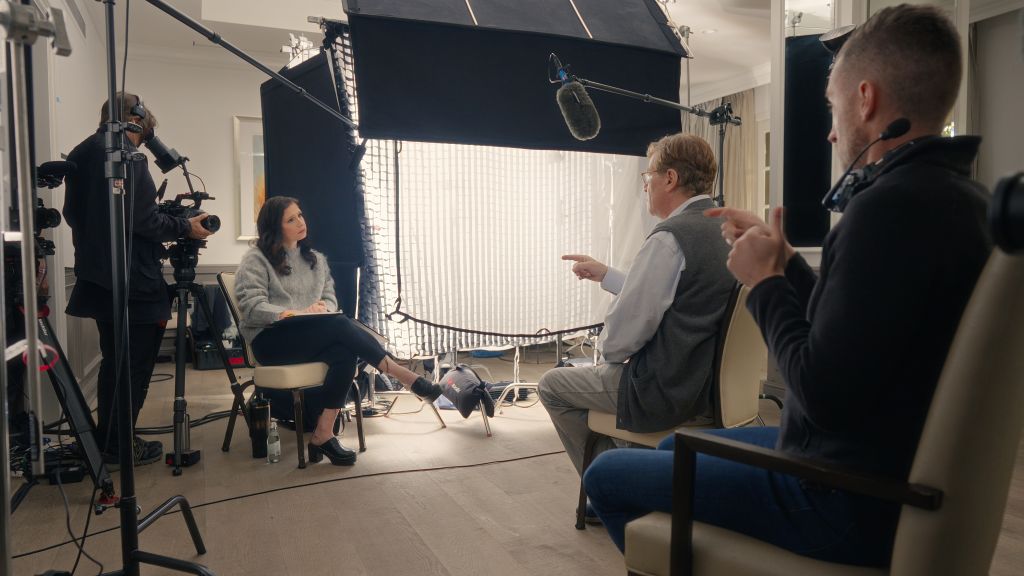
Perhaps most significant among Matlin’s activism is her work leading the fight to get closed captioning on television and home video so Deaf audiences could enjoy shows as well. Not Alone Anymore makes an ingenious play with the captions and gives them a dynamic presence in the film. “Captions, like most things in the world, are typically designed by hearing people, so I just always wished, ‘What if we could add colour to captions? What if we could have different fonts? What if they could move all over the screen?’” explains Stern. Captions in the documentary have colours specific to participants, too, as indicators of voice.
The unique captioning design comes from artist Alison O’Daniel, who made headway for Deaf cinema with 2023’s The Tuba Thieves. The hybrid film features dynamic captioning much like Stern describes. “When I saw Tuba Thieves, I was like, ‘Oh, my gosh: Alison thinks like me because she’s a Deaf woman,’” notes Stern. “She experiences the world and receives information through captions in the same way that I do. To work on a film about a Deaf woman who helped to make captions possible, and then we’re collaborating and making sure that we’re elevating captions in this different space together, it was such a cool experience. I think we need to put more people who receive things like that in control of the thing itself.”
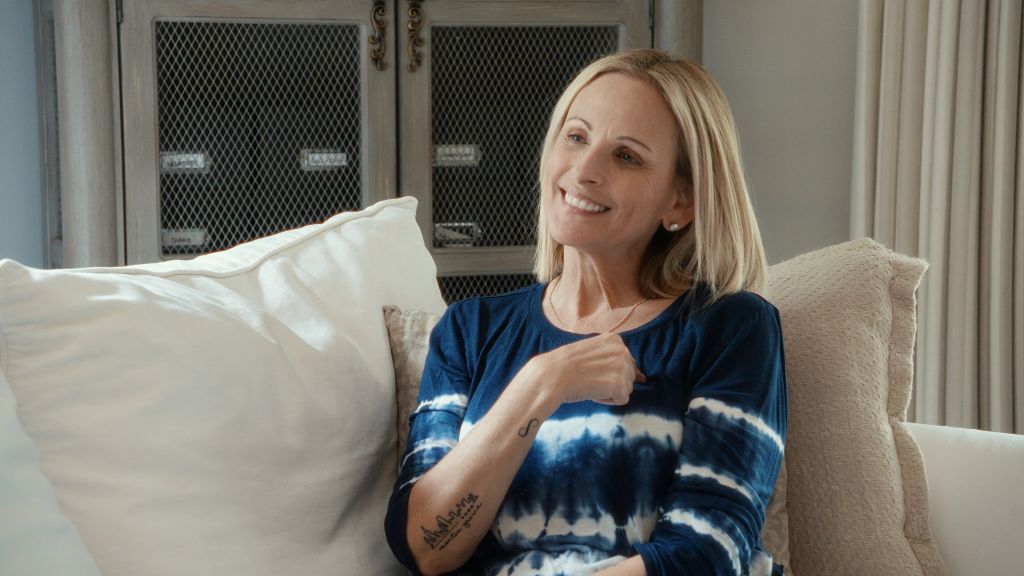
When The Tuba Thieves premiered at Sundance 2023, however, it was preceded by a reminder that the industry still has lots of work to do for accessibility. Just a few days before, the U.S. dramatic film jury, which included Matlin, had to leave its first screening because the captioning Matlin had been promised wasn’t working.
“When I was asked by Sundance, I was very much honoured—it’s a huge responsibility to be a judge,” remembers Matlin. “Naturally, my first question was, ‘How am I going to see the films? Are they all going to be captioned? Are they going to be accessible?’ And they said, ‘Yes, absolutely.’ I thought that they were referring to open captions on a screen so that all of us could see it. But that wasn’t the case.”
Matlin says she instead received the same cupholder device that most movie theatres use: a personal caption tool that often proves both a struggle and inconsistent. “When it doesn’t work, I would see a movie another time,” explains Matlin. “That’s typically what I would do, but I would prefer it with captions on the screen, not with a device. I would enjoy the experience much more, as anybody would. So, the fact that I had to sit there that wasn’t working for my first film, and as much as [Sundance’s team] tried to help me—they were very, very proactive about trying to make it work—without realizing it, the two other judges saw that my device wasn’t working and encouraged me to walk out.”
The festival run for Not Alone Anymore, however, shows some signs of improvement. After premiering at Sundance in January, Not Alone Anymore screened at Hot Docs where Matlin and Stern were among the festival’s headliners. The film played with open captioning and a dynamic Q&A that featured multiple ASL interpreters throughout the audience—an event that really felt like a breakthrough moment for the festival.
View this post on Instagram
Matlin says that touring with the film has let her see the work that still needs to be done with theatrical screenings though, although festivals are trying to make events accessible. “It’s still not the same way as everybody else [experiences a festival] where you can just choose a time or choose a particular screening at any particular theatre, and watch,” she observes. “The only choices that we are given are specific times at their choosing, whether they’re talking about the time of day or the theatre. We have to accommodate based on their schedule, and we have to struggle with that. I hope that in the future, all film festivals will insist that all films be captioned in the same way that the Academy requires that for any film being submitted for Best Picture. In the rule book, it says it has to be provided with captions.”
When asked about her performances that had a formative experience on her career though, Matlin cites a thrilling moment TV history that combined a great role with a stroke of creative genius for accessible production. “One that really, really sticks with me and really touched me is when the scene between me and Camryn Manheim, where it was done totally in Sign Language without any voiceover or captions,” Matlin notes of her 2000 guest appearance on the legal drama The Practice.
The scene plays in Not Alone Anymore as Matlin and Manheim have a heated exchange over legal advice as her character faces a life sentence. The tension in the scene is palpable as the actors convey the dramatic stakes without missing a beat for anyone watching at home.
“I remember that day that when the director [Michael Zinberg] decided to go ahead and remove any voiceovers, interpreters, and just go with that. I said, ‘Can you do that?’” Matlin recalls.
“And he said, ‘David E. Kelly said to do it.’ That really broke through for me as an actor because it felt so freeing. It felt like I could just go for it and not worry about voiceover the same way as I would when I see it through my own eyes. I was excited for the whole world to see that, to get a better understanding of my experience as a Deaf woman, as an actor. That was a moment where I had a chance to grow. But at the same time, when we shot that, I was seven or eight months pregnant with my second child. It’s a point I like to remember when I see that.”
Stern, meanwhile, points to the days she observed Matlin directing as moments of inspiration. “The way that Marlee sat and spoke to all of her actors, Deaf or hearing, and the way that she was able to pull out those performances, it was so fascinating to me,” notes Stern. “It encouraged me to stay in touch with my intuition, not just do what I’ve seen be done before. She didn’t direct TV in a way that I’ve seen before. She directed TV in a way that she could. That gave me the motivation to make the documentary that I could make—not one I’ve seen made before.”
